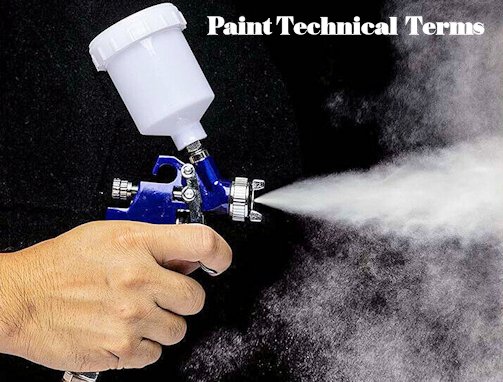Paint Technical terms H-W

The following are examples of technical terms related to paintwork and recommended for general use.
H
Hardness
Mechanical property of paint coat. Expressed by resistance of paint to mechanical effects (e.g. pressure, friction, scratching).
Hazing
Clouding of a paint surface not caused by external influences which shows up during or after drying.
P
Paint substance
Substance which provides a paint coat with specific characteristics. Collective terms can be used with word combinations, such as primers, stoving enamels, dipping enamels, clear coating, etc.
Paint, paint material
From liquid to pasty, also powdery coating material: applied on a base by means of pertinent methods. Provides a solid paint coat after a physical and/or chemical drying process.
Paint coat, paint film
Paint layer on top of a primer coat. Paint film is another term defining the formation of a cohesive layer.
Paint foundation
Collective term for basic materials such as steel, aluminium, plastics which serve as the base for the respective paint venetration (staining)
(a) Appearance of stain from the undercoat or an existing paint coat into paint layers above. (b) Appearance of paint stain on back of base (e.g. paper).
Pigment separation
Partial separation of binder and pigment or of pigments from each other.
Polishable
Characteristicof a paint for polishing (buffing) with polishing equipment (buffing pad, buffing wheel) and polishing compounds (paste, wax, polish) to obtain a high gloss.
Primer, primer material
Paint material suitable for priming.
Prime coat (primer)
As a paint layer suitable to serve as a connection between the base and paint coats.
R
Rub resistance
Resistance of paint finish to light rubbing.
Runs, sagging
Characteristic/tendency of paint to form runs when painting vertical surfaces. See also anti-sag characteristic.
S
Sanding ability
of paint coats during wet or dry sanding: (a) for smoothing and/or uniform roughing as a preparation for an additional paint coat; (b) as a characteristic, especially for priming, without faults (mechanical resistance,etc.) for preparing with sanding equipment.
Scratch resistance
Resistance of a paint coat to scratching influences, depending on hardness and drying condition.
Sedimentation
Formation of sediment of pigments caused by the joining of particles which are specifically heavier than the binder solution and will therefore settle to the bottom.
Separation
Visible separation of pigments in paint during storage or on paint coat during liquid state.
Swelling
(a) Increase in volume by absorbing liquids, vapours or gases into paint film. (b) 'Wetting interference' at the edges of a sanded area.
W
Weather resistance
Characteristic of a paint coat, defined as its resistance against changes:(a) exposure to the elements through effect of weather at the test site; (b) quick test by the effect of simulated exposure to weathering.
Wetting
Ability of paint to adequately flow, without interference.
Wetting interference
The appearance of flaws, i.e. fish-eye in a paint film. Yellowing Change in colour, especially of bright colours, caused by high thermal stresses or strong light effects.



